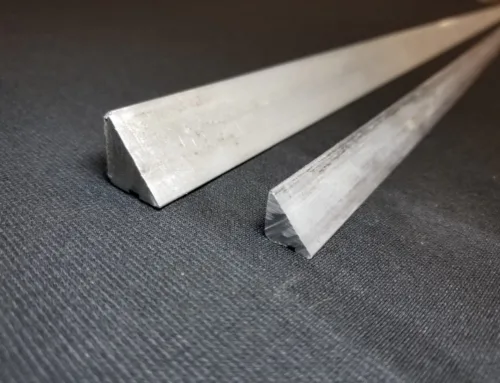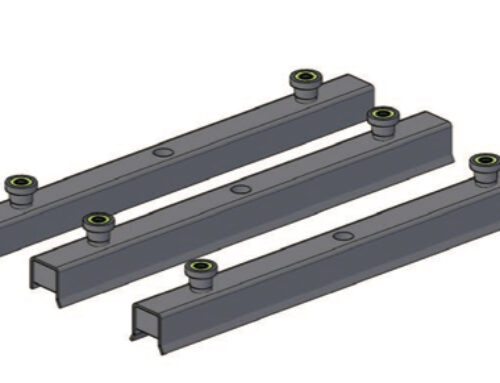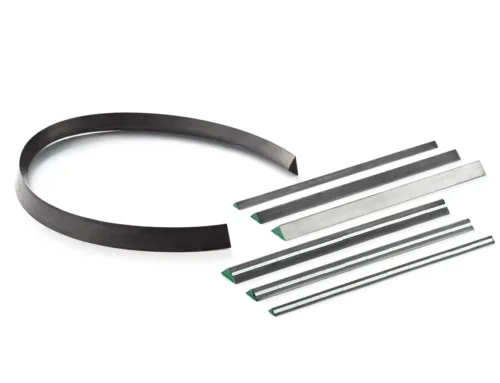The Hidden Threat: Understanding Hardware Disease and How It Starts
Ever wondered why farmers talk about “hardware disease” like it’s a four-letter word? It’s because this sneaky threat can hit your herd fast—and hard—if you’re not prepared. Let’s break down what’s really going on inside your cow’s stomach and why a simple piece of metal can cause so much trouble.
Ruminant Digestion Basics: Why Cows Are at Risk
Cattle, like cows and calves, are ruminants. That means they have a four-compartment stomach, with the rumen and reticulum doing the heavy lifting early in digestion. Here’s where things get risky:
- Cows aren’t picky eaters. They graze quickly and swallow just about anything in their path—including stray bits of wire, nails, or metal debris left in pastures or feed.
- The reticulum acts like a filter. But it can’t tell the difference between a tasty morsel and a sharp piece of metal.
- Metal settles in the reticulum. Over time, these objects can poke through the stomach wall, causing what’s known as traumatic reticuloperitonitis—the technical term for hardware disease.
Symptoms and Risks: How Hardware Disease Shows Up
Hardware disease isn’t just a stomachache. It can be downright devastating:
- Early signs: Loss of appetite, drop in milk production, reluctance to move, and a stiff back.
- Advanced symptoms: Fever, rapid breathing, swelling, and signs of pain when moving or lying down.
- Serious risks: If untreated, the metal can puncture the heart or cause severe infection—sometimes fatal.
The Cost: Economic Impact on Dairy and Beef Operations
Hardware disease isn’t just a health issue—it’s a business problem:
- Vet bills add up fast. Diagnosing and treating hardware disease can cost hundreds per animal.
- Lost productivity: Sick cows eat less, produce less milk, and may need to be culled early.
- Hidden losses: Even mild cases can slow weight gain or reduce breeding success.
- National impact: The US cattle industry loses millions each year to hardware disease—costs that hit both dairy and beef producers.
Bottom line? Hardware disease is a real threat—silent, costly, and preventable. That’s why it pays to know your risks and stay one step ahead. Ready to see how a rumen magnet can help? Let’s dig into what they are and how they work.
What Exactly is a Rumen Magnet? Breaking Down the Design and Function
A rumen magnet—sometimes called a cow magnet—is a simple but powerful tool for preventing hardware disease in cattle. Here’s how it works and why it’s a staple on US farms.
What Are Rumen Magnets Made Of?
Rumen magnets are usually made from strong, food-safe metals. The most common materials are alnico (an alloy of aluminum, nickel, and cobalt) and ferrite (ceramic). Both types are coated to prevent rust and corrosion inside the cow’s stomach. Most magnets are about the size and shape of a finger or a small cigar, making them easy to administer.
How Do Rumen Magnets Trap Metal?
When a cow swallows bits of wire, nails, or other sharp metal from feed or the ground, those objects can pierce the stomach lining and cause traumatic reticuloperitonitis (hardware disease). A rumen magnet sits in the reticulum (one of the cow’s stomach chambers) and attracts these stray bits of metal, holding them safely in place so they can’t cause damage. This is a proven, reliable way to protect cattle from internal injuries.
Types of Rumen Magnets: Pros and Cons
- Alnico Magnets: Strong pull, long-lasting, and effective for most farms. Slightly more expensive.
- Ferrite (Ceramic) Magnets: More affordable, corrosion-resistant, but sometimes less powerful than alnico.
- Plastic-Coated Magnets: Easy to clean, gentle on stomach tissue, but may have a weaker magnetic pull.
- Capsule or Bullet-Shaped Magnets: Designed for smooth administration and retention.
Safety and Retention Myths
Some folks worry that magnets might move around or get lost inside the cow. In reality, rumen magnets are designed to stay put in the reticulum, where they do their job quietly and safely. They’re too large to pass through the digestive tract, and the coating keeps them from breaking down. When used as directed, they’re safe and effective for long-term use.
Rumen magnets are a simple investment with big benefits, making them a no-brainer for US beef and dairy producers looking to prevent hardware disease.
The Science Behind Rumen Magnets: Why They’re a Proven Farm Essential
Rumen magnets have become a staple on US farms, thanks to decades of real-world results and solid research. Here’s why they’re trusted:
History & Evolution in US Agriculture
- Early Days: Farmers noticed cows eating stray metal bits—wire, nails, fencing scraps—leading to costly “hardware disease.”
- Innovation: The first cow magnets appeared in the 1960s. They were simple, but quickly proved effective at stopping sharp metal from piercing the reticulum.
- Modern Advances: Today’s magnets use stronger materials like neodymium and ferrite. They’re safer, last longer, and trap more debris.
Efficacy & Research Evidence
- Proven Prevention: Studies show rumen magnets can reduce hardware disease cases by up to 80% in herds.
- How It Works: Once swallowed, the magnet sits in the reticulum and attracts metal objects, keeping them from causing internal injuries.
- Veterinary Backing: Vets recommend magnets for both dairy and beef cattle, especially in older barns or fields with leftover wire.
| Prevention Method | Effectiveness | Cost | Labor |
|---|---|---|---|
| Rumen Magnet | High | Low | Easy |
| Manual Debris Removal | Medium | High | Time |
| Feed Screening | Medium | Medium | Medium |
| No Prevention | Low | Low | None |
Alternatives vs. Rumen Magnets
- Manual Clean-Up: Works, but you can’t catch every scrap.
- Feed Screening: Helps, but not foolproof.
- Magnets: Simple, cheap, reliable. One-time cost, long-term protection.
Environmental Benefits & Sustainability
- Less Antibiotic Use: Fewer sick cows means less need for drugs.
- Lower Waste: Healthy cattle produce more milk and beef, with less loss.
- Sustainable Materials: Many magnets use recycled metals. Learn about magnet recycling benefits for eco-friendly options.
Bottom line: Rumen magnets are a low-cost, high-impact tool that keeps cattle healthy and farms profitable. They’re a smart, sustainable choice for worldwide producers.
Step-by-Step: How to Administer a Rumen Magnet Safely and Effectively
When Should You Give a Cow Magnet?
- Best timing: Most farms give rumen magnets to young replacement heifers at 6-12 months old, before they join the milking herd or beef lot.
- Why early? Younger cattle are less likely to have already swallowed metal debris, so early administration helps prevent hardware disease before it starts.
- Routine: Some operations add magnets during vaccination or deworming sessions for easy herd management.
Tools & Techniques for Safe Delivery
- Magnet type: Use a smooth-coated, veterinary-grade rumen magnet. Alnico or ferrite cow magnets both work, but ferrite is more common for US farms.
- Delivery tool: A balling gun (magnet applicator) ensures safe placement in the cow’s mouth and down the throat.
- Steps:
- Restrain the animal gently—head gate or chute works best.
- Load the magnet into the balling gun.
- Insert the gun into the cow’s mouth, aiming for the back of the tongue.
- Press the plunger to release the magnet.
- Watch for swallowing; most cattle swallow automatically.
Monitoring & Post-Administration Care
- Immediate checks: Make sure the cow swallows—sometimes you’ll see a swallowing motion or a quick tongue movement.
- Follow-up: Monitor for signs of choking or distress, though issues are rare with proper technique.
- Long-term: Once in the rumen, magnets usually stay put and start working right away. No need for removal unless you’re sending animals to slaughter (check local guidelines).
Herd-Wide Best Practices
- Keep records: Track which animals received magnets and when. This helps with herd health planning.
- Train staff: Make sure everyone knows the right technique and safety steps.
- Bulk administration: For large herds, schedule magnet delivery alongside other routine health checks to save time.
Tip: Always use quality magnets from reliable suppliers. For info on how magnets actually attract and trap metal, check out this guide on magnetic permeability.
With these steps, you can protect your herd from hardware disease and keep your operation running smoothly.
Choosing the Right Rumen Magnet: Factors for Your Operation

Picking the best rumen magnet for your herd isn’t just about grabbing the first one you see. The right choice can make a real difference in preventing hardware disease and protecting your cattle investment. Here’s what to look for:
Key Specs: Pull Strength, Coating, and Shape
- Pull Strength: The stronger the magnet, the better it grabs stray metal. For US beef and dairy operations, look for magnets with high surface gauss and strong magnetic flux.
- Coating: Good rumen magnets are coated to prevent rust and corrosion inside the cow’s stomach. Stainless steel is the gold standard.
- Shape: Bar and capsule shapes are most common. Capsule magnets are easier to swallow and less likely to get stuck during administration.
Supplier Reliability and Certifications
- Choose suppliers with a strong track record in the livestock industry.
- Look for certifications (like ISO or veterinary approvals) to make sure you’re getting safe, effective magnets.
- Bulk rumen magnet suppliers often offer better deals for larger herds.
Quality Spotlight: NBAEM’s Magnet Features
NBAEM’s rumen magnets stand out for their:
- Consistent pull strength and magnetic flux, which you can check in detail on this NBAEM magnet guide.
- Durable stainless steel coating—safe for long-term retention.
- Smooth capsule shape, designed for easy administration and maximum retention in the reticulum.
Budget vs. Premium: Options for Every Farm Size
- Budget Magnets: Good for smaller herds or operations just starting out. You’ll get basic protection, but check that the magnet still meets strength and safety standards.
- Premium Magnets: Worth it for large US dairy or beef farms. They offer higher pull strength, better coatings, and often come with supplier guarantees.
Tip: Don’t cut corners on quality—saving a few dollars now can cost a lot more if hardware disease hits your herd. Always match the magnet’s specs to your operation’s size and risk level.
Real-World Results: Success Stories and Data from US Farms
Rumen magnets aren’t just theory—they’re a proven tool for US cattle producers. Let’s look at what’s actually happening out in the field.
Case Studies from Dairy and Beef Operations
- Dairy Farms: Wisconsin dairy producers saw a 60% drop in hardware disease cases after herd-wide rumen magnet use. Fewer sick cows meant more milk in the tank and less downtime for treatments.
- Beef Ranches: Texas cattlemen reported less loss at processing thanks to early magnet administration. One operation saved $4,000 per year by avoiding condemned carcasses.
ROI Calculator: Cost Savings and Productivity Gains
- Fewer Vet Bills: On average, treating hardware disease can run $200–$400 per case. Preventing just five cases per year saves $1,000–$2,000.
- More Production: Healthier cows mean better weight gain and milk output. Farms using cow magnets regularly see 3–5% improvement in annual yield.
- Quick Payback: Most operations recover their investment in magnets within 6–12 months.
Challenges and Solutions in Magnet Use
- Challenge: Some farmers worry magnets won’t stay in the rumen.
- Solution: Modern magnets are designed for retention and safety, with coatings that prevent corrosion and shapes that won’t migrate.
- Challenge: Occasional cases of missed administration.
- Solution: Use a checklist and schedule magnet delivery during routine herd health checks.
Bottom Line
Rumen magnets work. They save money, boost productivity, and keep cattle healthier. US farms of all sizes are seeing real gains, making these simple tools a must-have for protecting herds from hardware disease.
Complementary Strategies: Maximizing Protection Beyond Rumen Magnets
Rumen magnets are a proven tool for preventing hardware disease, but they work best as part of a bigger plan. Here’s how you can boost protection for your herd:
Farm Hygiene & Debris Management Tips
- Regular cleaning: Keep feeding areas, pens, and pastures free of metal scraps, nails, and old fencing.
- Feed inspection: Always check feed and silage for stray wires or sharp metal before giving it to cattle.
- Safe equipment use: Train staff to avoid leaving tools or wire around. Use bins for scrap metal and keep them away from animals.
- Routine sweeps: Use magnets or metal detectors in high-traffic areas to pick up hidden debris.
Integrating Rumen Magnets with Herd Health Plans
- Annual health checks: Add rumen magnet administration to your herd’s routine health schedule, especially for replacement heifers and cows entering high-risk periods.
- Record keeping: Track which animals have received magnets and monitor for symptoms of hardware disease.
- Staff training: Make sure everyone knows why magnets matter and how to spot early signs of trouble.
Future Innovations in Cattle Health Magnets
- Eco-friendly magnets: Manufacturers are working on sustainable materials and coatings that last longer and reduce environmental impact. For more info, see how sustainability in magnetic material production is shaping new products.
- Smart monitoring: Some new magnets are being designed to work with sensors, helping farmers track magnet placement and effectiveness in real-time.
- Improved designs: Advances in magnet shapes and coatings are making them safer and more efficient for cattle of all sizes.
Bottom line: Rumen magnets are a smart investment, but pairing them with good farm hygiene and regular health checks gives your herd the best shot at staying healthy and productive. Stay tuned for future innovations that could make cattle protection even easier.
Frequently Asked Questions: Your Rumen Magnet Quick Reference
Can I use a rumen magnet in sheep, goats, or other ruminants?
Rumen magnets are mostly designed for cattle, but some vets may recommend them for larger sheep or goats at risk of hardware disease. Always check with your local veterinarian before using cow magnets in non-cattle ruminants.
Will a rumen magnet cure existing hardware disease in cows?
If the metal object hasn’t punctured the reticulum wall yet, a rumen magnet can help trap it and prevent further damage. However, if symptoms of traumatic reticuloperitonitis (like reduced appetite, fever, or pain) are present, you need to call your vet right away. Magnets are best for prevention, not treatment.
How do I find reliable suppliers for bulk rumen magnets?
Look for suppliers with solid reviews, US-based support, and clear product specs. NBAEM, for example, highlights advanced coatings and strong pull strength in their cow magnets. Always check for certifications and request details on magnet composition—this guide on making NdFeB magnets can help you understand quality differences.
Are there side effects or risks with rumen magnets?
Rumen magnets are safe when administered correctly. Rarely, a magnet may pass through the digestive tract and be expelled. Complications are extremely uncommon if you use the right size and follow best practices for installation.
Can rumen magnets be removed if needed?
Normally, magnets stay in the reticulum for life. Removal is not standard practice and would require surgical intervention, which is rarely necessary.





Leave A Comment